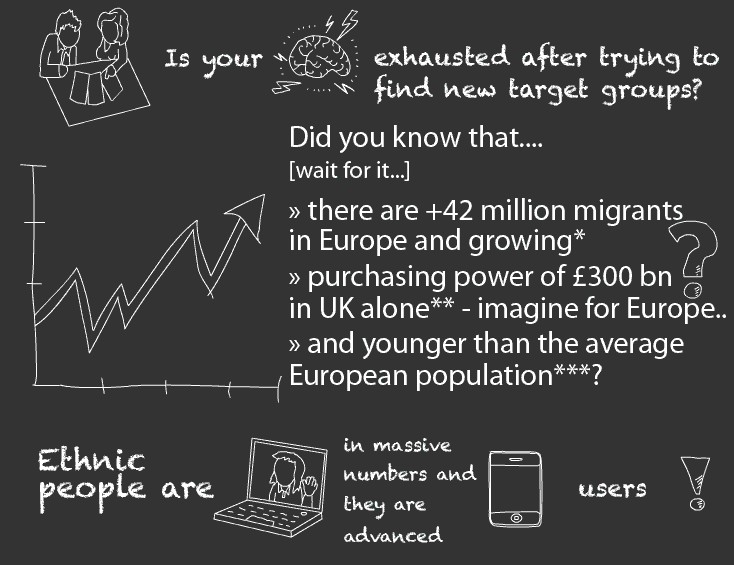Companies have been slicing and dicing their target audiences for years; distinguishing different groups with codes like ABCDE and nicknames like ‘Baby Boomers’ and ‘Generation Xers’.

Over the last few years, marketers have started to wake up to the fact that ‘people not born here’ represent a growing segment of their total audience. More importantly it is becoming increasingly apparent that a ‘one size fits all’ model will not work for every business. ‘Ethnic marketing’ is the label which is being used by marketers to identify the trend. Put simply, someone born in Zagreb might not have the same tastes and needs as a native of Zaragoza.
Guion & Kent provide an interesting set of guidelines for ethnic marketing with these five principles to follow:
- Value the cultural uniqueness of your target group.
- Value cooperation and bridge-building with community leaders and other organizations working within the community.
- Value the cultural beliefs, symbols, and practices of your target group.
- Value differences in languages, accents, practices, and social conduct.
- Value word-of-mouth and interpersonal communication to spread your message.
It is becoming more common to hear about different ways in which companies are reaching out to different communities, some examples include:
- The UK’s large Polish expat community was identified as a succulent target by Tesco who reckoned that there were enough home-sick Poles to justify launching a specific range of imported and own-brand products and even a specific website to buy them from http://www.tesco.com/polski/
- Wal-Mart providing hitching posts so Amish customers can tie up their horses outside the store and launching Supermercados de Walmart to service the large Hispanic communities in Pheonix and Houston. More
- Most people would classify McDonalds as the best example of global standardisation, a Big Mac is a Big Mac everywhere, no? In reality, there is a fair amount of customisation going on, both at a national levels and targeting specific ethnic groups. In some countries with large Muslim populations, there is a menu with halal beef in the burgers. Chicken is more popular with the Chinese, so gets more placement on the menu there.
- In Germany, one of the mobile operators launched a brand specifically targeting the large Turkish population: http://www.ayyildiz.de/
This is a globalisation trend where consumers do get some definite benefits from the attentions of big business. Companies that provide more customised and appealing offers for different groups will gain customers as markets fragment. Marketers take note! Show you care about what different groups of people want, then they will be more likely to engage with your brand.
UPDATE: We have added to some information about expatriate media here and here is an interview about ethnic expat marketing